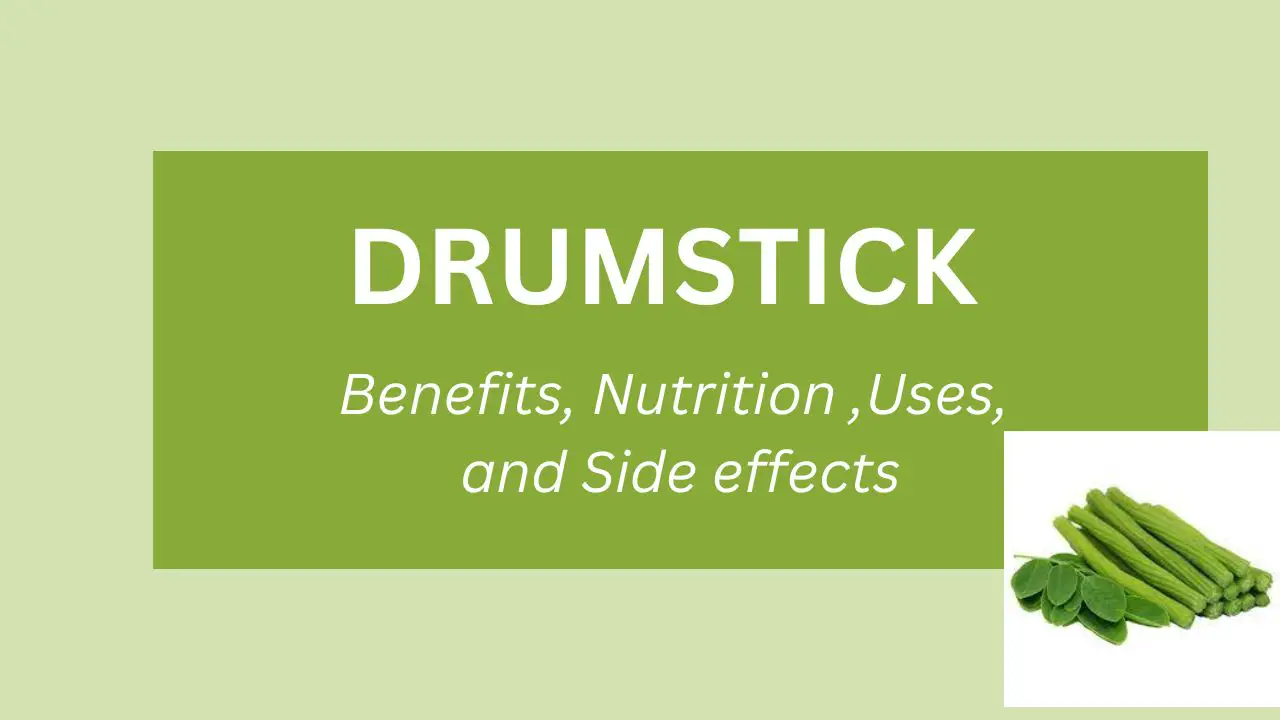Physical Address
304 North Cardinal St.
Dorchester Center, MA 02124
Physical Address
304 North Cardinal St.
Dorchester Center, MA 02124

Drumstick, commonly referred to as Moringa oleifera, has gained considerable recognition in recent times due to its multifaceted nature as a nutrient-dense plant. Its remarkable health advantages, substantial nutritional value, and diverse culinary uses have captured attention. Originating from tropical and subtropical zones, this plant has enjoyed historical significance in traditional medicine and cooking.
Frequently hailed as a ‘superfood,' the drumstick stands out due to its extraordinary nutritional worth. Packed with vital vitamins, minerals, and antioxidants, it brings forth a wide array of health advantages.
The drumstick abounds in vitamins, particularly vitamin C, vitamin A, and diverse B vitamins. Vitamin C bolsters the immune system and fosters collagen production. Vitamin A is vital for sight, immune function, and skin health, while B vitamins contribute to energy metabolism and cognitive function.
These pods represent a valuable mineral reservoir, encompassing calcium, iron, magnesium, and potassium. Calcium upholds bone health, iron facilitates oxygen conveyance within the bloodstream, magnesium aids muscle and nerve activity, and potassium regulates fluid and electrolyte equilibrium.
Drumsticks incorporate robust antioxidants like quercetin, chlorogenic acid, and beta-carotene. These compounds combat oxidative tension, curtailing chronic disease risks and fostering comprehensive well-being.
The drumstick boasts anti-inflammatory attributes ascribed to elements such as isothiocyanates. These attributes are thought to contribute to its potential for mitigating inflammation-linked conditions.
Drumstick boasts a remarkable nutrient profile that has earned it the title of superfood.' A 100-gram serving of drumstick pods offers an array of essential nutrients, including 37 kcal of energy, 2.5 g of protein, 8.5 g of carbohydrates, and 1.8 g of dietary fiber. These pods are notably rich in key vitamins: they provide a staggering 145% of the recommended daily intake (RDI) of vitamin C, an important immune system booster, and 9% of the RDI of vitamin A, vital for vision and skin health. Additionally, drumsticks contribute 9% of the RDI of calcium, essential for strong bones, and 11% of the RDI of iron, crucial for oxygen transport in the blood. With 8% of the RDI of magnesium and 7% of the RDI of potassium, drumsticks support nerve function and fluid balance. This nutritional powerhouse, encompassing vitamins, minerals, and antioxidants, underscores the drumstick's potential to promote overall well-being and health.
Drumstick leaf powder or extracts are employed as nutritional supplements due to their elevated vitamin and mineral composition, often featuring in superfood blends.
In traditional medicine, drumstick leaves and pods have been used to alleviate respiratory problems such as asthma, bronchitis, and congestion. They might be consumed as part of herbal remedies.
Crushed drumstick seeds have been harnessed as a natural coagulant in water purification procedures, aiding in the removal of impurities and sediment from water sources.
Drumsticks contain various types of nutrients like vitamins, minerals,and antioxidants, which help in curing various health issues. It also helps regulate blood sugar levels. The plant contains compounds with anti-inflammatory properties, which may contribute to reducing inflammation-related ailments.
Drumstick is rich in antioxidant attributes, which are beneficial for the skin. They help in curing acne, wounds, and skin infections.

While drumstick (Moringa oleifera) comes with an array of health advantages, it's crucial to be mindful of possible adverse effects, particularly when consuming it excessively or for prolonged periods. Here are some potential drawbacks associated with drumsticks:-
The elevated fiber content in drumstick, notably in its leaves and pods, might lead to gastrointestinal unease such as bloating, gas, and diarrhea, especially if ingested in large quantities.
Drumstick possesses inherent properties that could potentially lower blood pressure. While advantageous for those with hypertension, individuals with already low blood pressure should moderate their drumstick consumption, as excessive intake might result in dizziness or faintness.
Individuals may exhibit an allergic response to drumsticks. Allergic symptoms can vary in severity, encompassing itching, swelling, rash, and breathing difficulties. If such symptoms occur after drumstick consumption, discontinuing use and seeking medical attention is recommended.
The active constituents in drumstick could potentially interact with specific medications. If you're taking medicines for diabetes, high blood pressure, or blood thinning, consulting a healthcare provider before incorporating substantial drumstick quantities into your diet is advised to avert potential interactions.
For individuals with kidney concerns, high doses of drumstick extracts or supplements could pose risks due to certain plant compounds that might impact kidney function.
The unassuming appearance of the drumstick conceals a treasure trove of nutrients and potential health advantages. Ranging from essential vitamins and minerals to antioxidants and compounds with anti-inflammatory properties, it plays a role in promoting overall health and averting illnesses. Its adaptability as a culinary component enriches diverse dishes with both taste and nourishment. However, as with any consumable, moderation is essential, and individuals with specific health conditions should seek expert guidance before embracing it as a dietary staple.
Drumstick can be added to curries, stews, soups, salads, and smoothies. The leaves, pods, and seeds are all used in different culinary applications.
Drumstick has been associated with immune support, anti-inflammatory effects, blood sugar regulation, and digestive health improvement. However, scientific research is ongoing to fully understand these potential benefits.
Drumstick's low-calorie content and high fiber content can be beneficial for weight management by promoting feelings of fullness and aiding digestion. However, it's just one part of a balanced diet and healthy lifestyle.
If you're taking medications, especially blood-thinning drugs, blood pressure medication, or other specific medications, consult your healthcare provider before incorporating significant amounts of drumstick into your diet to avoid potential interactions.